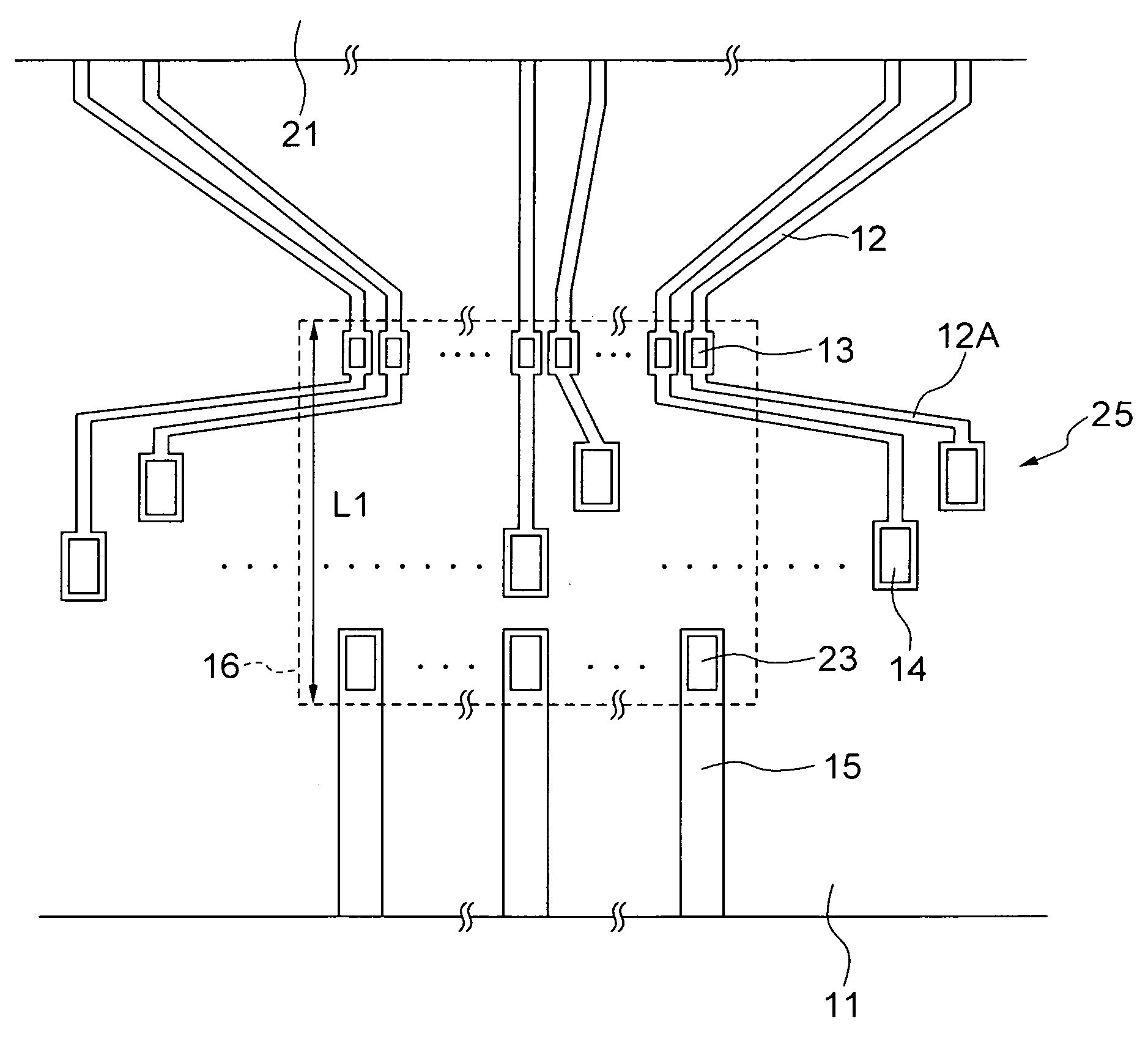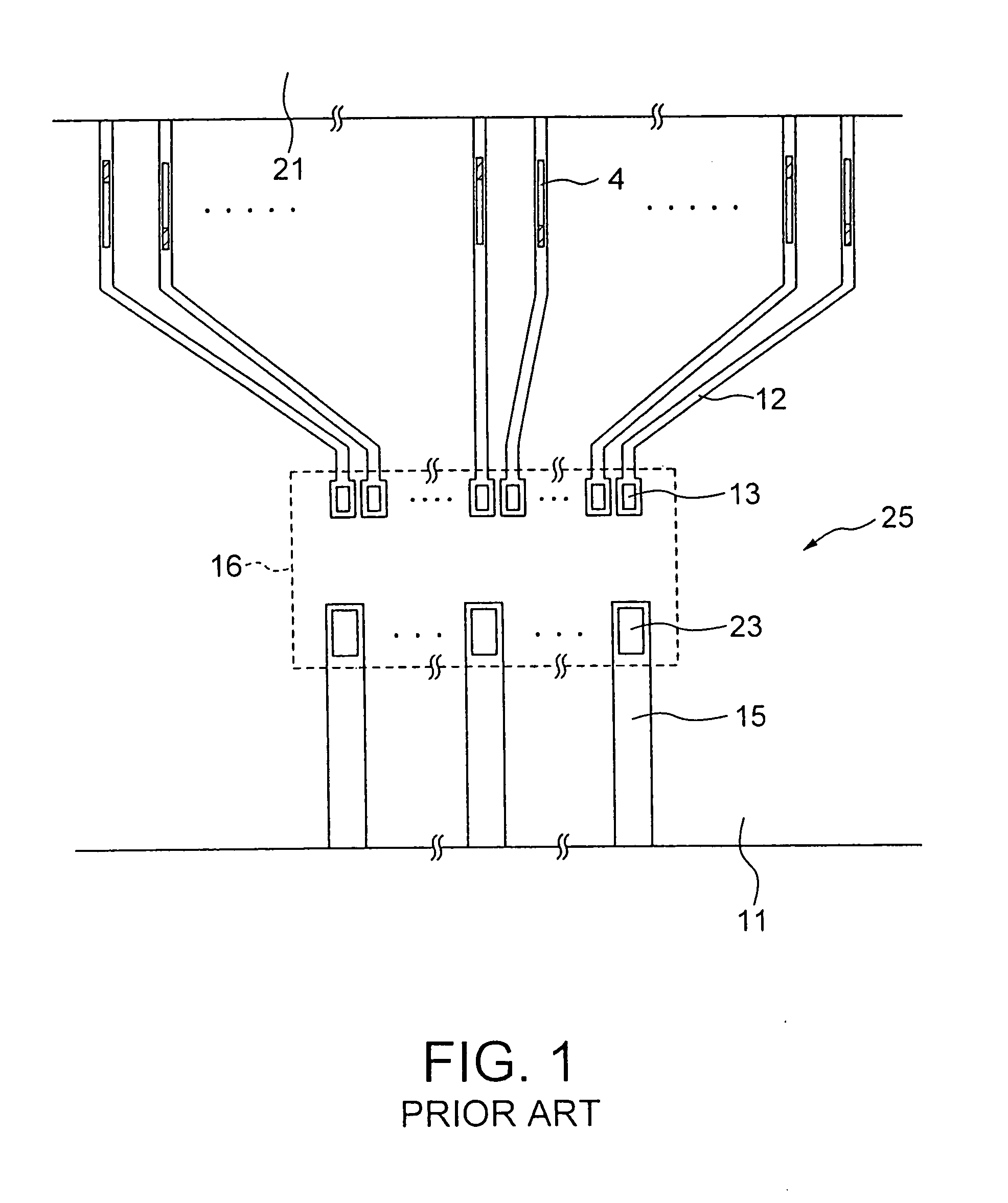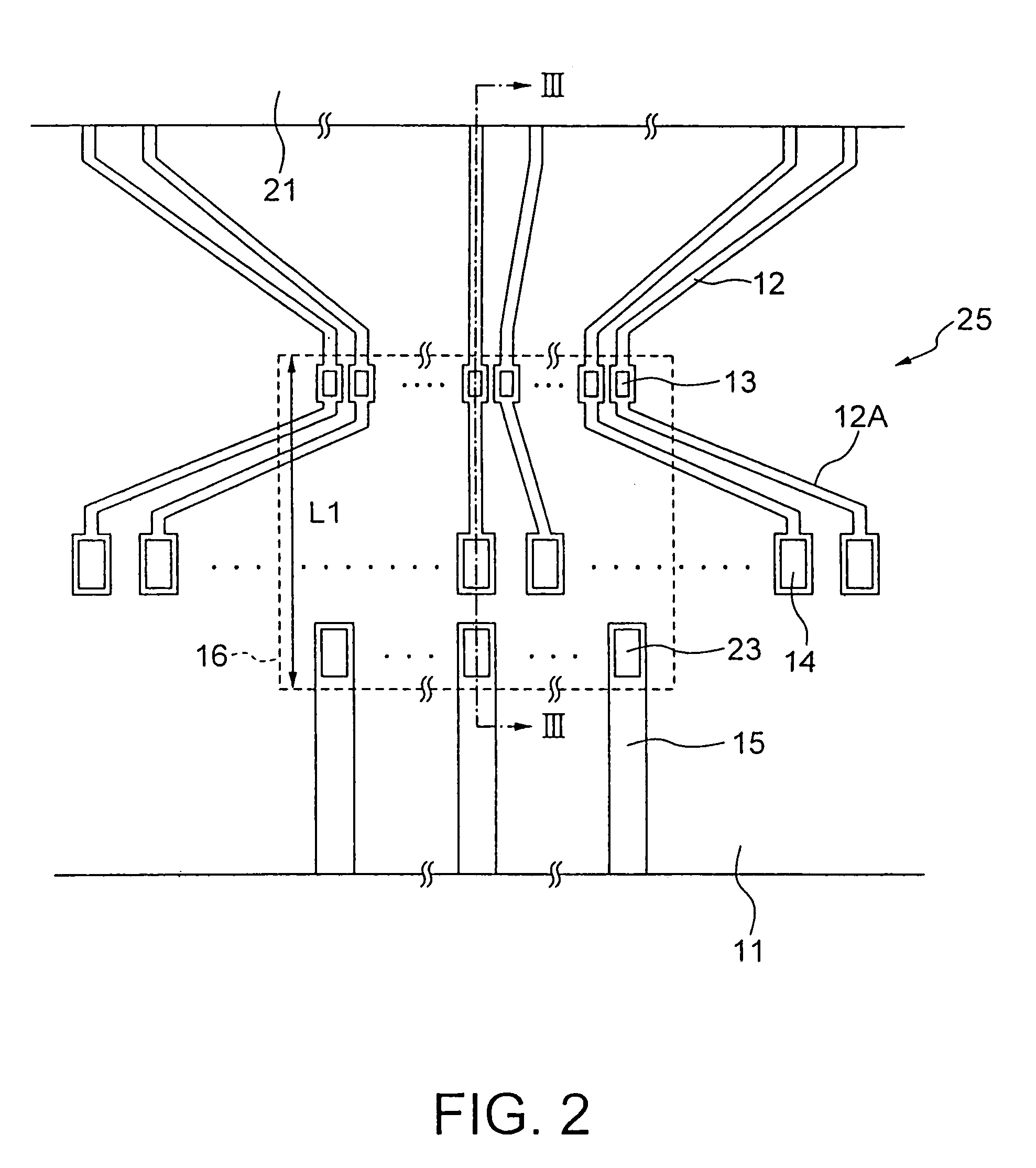LCD device having test contact pads
a liquid crystal display and contact pad technology, applied in the direction of measurement devices, electrical testing, instruments, etc., can solve the problems of difficult manufacture of test probes, short circuit failures, and long time it takes to align the probe electrodes with respect to the contact pads, and achieve the effect of safe test operation
- Summary
- Abstract
- Description
- Claims
- Application Information
AI Technical Summary
Benefits of technology
Problems solved by technology
Method used
Image
Examples
first embodiment
[0033]In the first embodiment, the contact pads 14 disposed apart from the electrode pads 13 and at the extensions of the internal leads 12 allow the LCD panel to be substantially free from a malfunction irrespective of occurrence of abrasion, attachment of impurities and corrosion of contact pads during the test of the LCD panel.
[0034]In addition, the pitch of extensions 12A of the internal leads 12, which is as high as around 100 μm, enables conventional probe electrodes to test the LCD panel with high reliability and high throughput irrespective of a smaller pitch which is around tens of micrometers between the electrode pads 13 for mounting the drive semiconductor chip 16.
[0035]Referring to FIG. 4, a LCD device according to a second embodiment of the present invention is similar to the first embodiment except that the contact pads 14 are disposed at the extension 12A of the internal leads 12 in a staggered arrangement in the present embodiment.
[0036]It is to be noted that the pi...
third embodiment
[0044]In the third embodiment, the lengths of the extensions 12A of the internal leads 12 may be as large as several millimeters, whereby the number of steps of staggered arrangement can be increased compared to the structure shown in FIG. 4. In FIG. 5, although the two-step staggered arrangement is exemplified, the number of steps can be more than two.
[0045]For the two-step staggered arrangement shown in FIG. 5, if the pitch of the color elements is below 50 μm, 100 μm can be obtained for the pitch of the contact pads 14.
[0046]All the contact pads 14 are disposed outside the mounting area for the drive semiconductor chip 16 as shown in FIG. 5. In this case, the contact pads 14 can be used for test pads during testing the connections or signal transmissions between the drive semiconductor chip 16 and the LCD panel.
[0047]Since the above embodiments are described only for examples, the present invention is not limited to the above embodiments and various modifications or alterations c...
PUM
 Login to View More
Login to View More Abstract
Description
Claims
Application Information
 Login to View More
Login to View More - R&D
- Intellectual Property
- Life Sciences
- Materials
- Tech Scout
- Unparalleled Data Quality
- Higher Quality Content
- 60% Fewer Hallucinations
Browse by: Latest US Patents, China's latest patents, Technical Efficacy Thesaurus, Application Domain, Technology Topic, Popular Technical Reports.
© 2025 PatSnap. All rights reserved.Legal|Privacy policy|Modern Slavery Act Transparency Statement|Sitemap|About US| Contact US: help@patsnap.com



